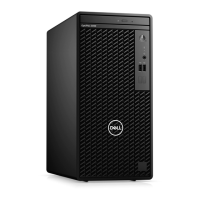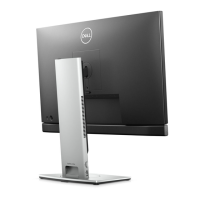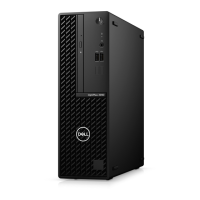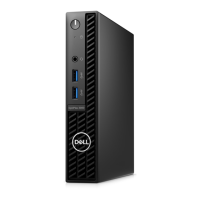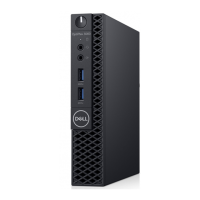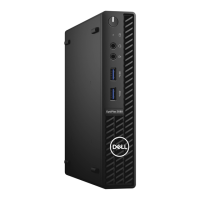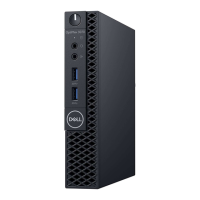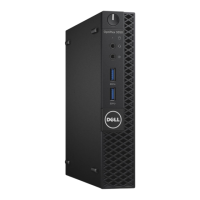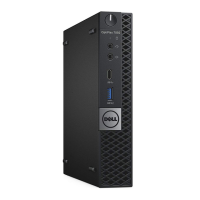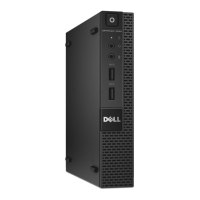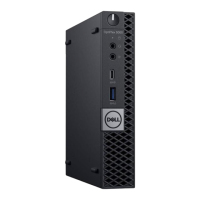What to do if my Dell Desktop has a CPU failure?
- SShawn HernandezAug 18, 2025
First, run the Dell Support Assist or Dell Diagnostics tool. If the problem continues, consider replacing the system board.
What to do if my Dell Desktop has a CPU failure?
First, run the Dell Support Assist or Dell Diagnostics tool. If the problem continues, consider replacing the system board.
How to fix a Dell OptiPlex 3090 Micro when no memory or RAM is detected?
First, make sure the memory module is correctly installed. If the problem persists, replace the memory module.
How to fix system board failure on Dell OptiPlex 3090 Micro?
Try flashing the latest BIOS version. If the issue persists, the system board may need to be replaced.
What to do if my Dell Desktop has memory/RAM failure?
Try resetting the memory module. If the problem continues, replace the memory module.
What to do if my Dell OptiPlex 3090 Micro has an invalid memory installed?
Reset the memory module. If the problem persists, replace it.
How do I fix a system board error on my Dell OptiPlex 3090 Micro?
Flash the latest BIOS version. If the problem persists, replace the system board.
What to do if my Dell OptiPlex 3090 Micro Desktop has a BIOS Recovery image not found?
Flash the latest BIOS version. If the problem persists, replace the system board.
What to do if my Dell OptiPlex 3090 Micro has a BIOS Recovery image found but invalid?
Flash the latest BIOS version. If the issue persists, replace the system board.
What to do if my Dell Desktop has a CMOS battery failure?
Reset the CMOS battery connection. If the problem continues, replace the RTS battery.
What to do if my Dell OptiPlex 3090 Micro Desktop has a PCI or Video card/chip failure?
Replace the system board.
Guidelines for protecting your computer and ensuring personal safety during service procedures.
Measures to prevent electrostatic discharge damage to sensitive electronic components.
Steps to take after completing internal computer service to ensure proper reassembly.
Lists necessary tools and screw types for component removal and installation.
Identifies and labels the main internal components of the system.
Procedure for removing and installing the computer's side cover.
Steps for removing and installing the front bezel of the computer.
Instructions for removing and installing the hard-drive assembly.
Procedure for removing and installing the hard-drive bracket.
Steps for installing the 2.5-inch hard-drive assembly.
Guides for removing and installing the M.2 2230 PCIe solid-state drive.
Guides for removing and installing the M.2 2280 PCIe solid-state drive.
Detailed steps for removing and installing the system's fan assembly.
Instructions for removing and installing the Wireless Local Area Network (WLAN) card.
Steps for removing and installing the heat sink assembly.
Guides for removing and installing the coin-cell battery.
Instructions for removing and installing memory modules (RAM).
Steps for removing and installing the system speaker.
Instructions for removing and installing optional I/O modules like Type-C, HDMI, VGA, DP, Serial.
Detailed steps for removing and installing the computer's processor.
Comprehensive instructions for removing and installing the system board.
Explains BIOS interaction, navigation keys, and entering the one-time boot menu.
Details general options, system information, boot sequence, and date/time settings.
Covers admin/system passwords, secure boot, TPM, and chassis intrusion settings.
Options for optimizing CPU performance, power states, and system startup behavior.
Configuration for virtualization, wireless devices, system maintenance, and logs.
Instructions for updating the system BIOS using various methods.
Procedures for setting, changing, deleting, and clearing BIOS passwords.
Guide to running hardware diagnostics and interpreting diagnostic LED codes.
Procedures for OS recovery, backup options, and WiFi troubleshooting.
Information and steps to contact Dell support for sales, technical, or customer service.
Guidelines for protecting your computer and ensuring personal safety during service procedures.
Measures to prevent electrostatic discharge damage to sensitive electronic components.
Steps to take after completing internal computer service to ensure proper reassembly.
Lists necessary tools and screw types for component removal and installation.
Identifies and labels the main internal components of the system.
Procedure for removing and installing the computer's side cover.
Steps for removing and installing the front bezel of the computer.
Instructions for removing and installing the hard-drive assembly.
Procedure for removing and installing the hard-drive bracket.
Steps for installing the 2.5-inch hard-drive assembly.
Guides for removing and installing the M.2 2230 PCIe solid-state drive.
Guides for removing and installing the M.2 2280 PCIe solid-state drive.
Detailed steps for removing and installing the system's fan assembly.
Instructions for removing and installing the Wireless Local Area Network (WLAN) card.
Steps for removing and installing the heat sink assembly.
Guides for removing and installing the coin-cell battery.
Instructions for removing and installing memory modules (RAM).
Steps for removing and installing the system speaker.
Instructions for removing and installing optional I/O modules like Type-C, HDMI, VGA, DP, Serial.
Detailed steps for removing and installing the computer's processor.
Comprehensive instructions for removing and installing the system board.
Explains BIOS interaction, navigation keys, and entering the one-time boot menu.
Details general options, system information, boot sequence, and date/time settings.
Covers admin/system passwords, secure boot, TPM, and chassis intrusion settings.
Options for optimizing CPU performance, power states, and system startup behavior.
Configuration for virtualization, wireless devices, system maintenance, and logs.
Instructions for updating the system BIOS using various methods.
Procedures for setting, changing, deleting, and clearing BIOS passwords.
Guide to running hardware diagnostics and interpreting diagnostic LED codes.
Procedures for OS recovery, backup options, and WiFi troubleshooting.
Information and steps to contact Dell support for sales, technical, or customer service.
| Audio | Realtek ALC3246 with Waves MaxxAudio Pro |
|---|---|
| Form Factor | Micro |
| Processor Options | 10th Gen Intel Core i3, i5, i7 |
| Chipset | Intel H470 Chipset |
| Memory | Up to 64GB DDR4 2933MHz |
| Storage Options | M.2 PCIe NVMe SSD, 2.5-inch HDD/SSD |
| Graphics | Intel UHD Graphics 630 |
| Ports (Front) | 1x USB 3.2 Gen 1 Type-C, 2x USB 3.2 Gen 1 Type-A, 1x Universal Audio Jack |
| Ports (Rear) | 2 x USB 2.0, 2 x USB 3.2 Gen 1 Type-A, 1 x RJ-45 |
| Operating System | Windows 10 Pro |
| Dimensions | 36.0mm x 178.0mm x 182.0mm |
| Networking | 10/100/1000 Mbps |
| Wireless | Intel® Wi-Fi 6 AX201, 2x2, 802.11ax with Bluetooth 5.1 |
| Power Supply | 65 W adapter |
